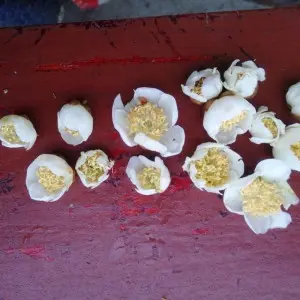Dùbh . 04, 2024 07:26 Back to list
effect of pollination on pear trees
The Effect of Pollination on Pear Trees
Pollination is a crucial process in the reproduction of flowering plants, significantly influencing their growth and fruit yield. Among the various fruit-bearing trees, pear trees (Pyrus spp.) stand out as a highly valued species due to their delicious fruit and ecological importance. Understanding the effect of pollination on pear trees is essential for both commercial fruit production and conservation efforts.
Pear trees are generally insect-pollinated, primarily by bees. The transfer of pollen from the male parts (anthers) of one flower to the female parts (stigma) of another flower is essential for fertilization and subsequent fruit development. However, pear trees are often self-incompatible, meaning that they require pollen from a different variety to initiate fruit set. This necessity for cross-pollination highlights the importance of having compatible pollinators and the right planting strategies to ensure adequate pollination.
Effects on Fruit Set
Successful pollination leads to fertilization, which is critical for fruit set. Research has indicated that pear trees exhibit a significantly higher fruit set when cross-pollination occurs. In compatible cross-pollinations, the likelihood of developing fruit often exceeds 70%, compared to self-pollination rates that can fall beneath 30%. This difference underscores the importance of cultivar selection and the planting of multiple varieties to achieve optimal yields.
Quality and Size of Pears
In addition to fruit set, pollination quality dramatically affects the size and quality of the resulting pears. Trees that receive adequate cross-pollen tend to produce larger, more uniform fruits with higher sugar content and better texture. These attributes are particularly important for commercial growers, as consumers often seek high-quality fruits. Moreover, poor pollination can lead to a phenomenon known as June drop, where immature fruits drop prematurely due to insufficient fertilization, further impacting harvest yields.
Pollinator Activity Influence
effect of pollination on pear trees

The presence and activity of pollinators also play a vital role in pear tree pollination. Various factors, such as weather conditions, availability of forage plants, and pesticide use, can affect pollinator activity. Favorable weather during the flowering period typically enhances pollinator visitation rates, leading to improved fruit set. Conversely, adverse weather, such as rain or strong winds, can discourage pollinator activity and consequently hinder successful pollination.
Cultivar Compatibility
The success of pollination in pear trees is also reliant on cultivar compatibility. Different pear varieties exhibit varying levels of pollen viability and compatibility. For instance, European pears (Pyrus communis) may not successfully cross-pollinate with Asian pears (Pyrus pyrifolia). Thus, it is vital for orchard managers to carefully select pairs of flowering pear varieties that are known to be compatible to maximize pollination success.
Strategic Planting
To enhance pollination efficiency, strategic orchard planting is essential. A diverse planting of compatible pear varieties within proximity can promote cross-pollination. Additionally, introducing pollinator-friendly practices—such as planting nectar-rich flowers nearby and reducing pesticide use—can create a conducive environment for pollinators, ultimately improving the effectiveness of pollination processes.
Conclusion
The effect of pollination on pear trees cannot be overstated. It directly influences fruit set, quality, and size, playing a critical role in the success of pear cultivation both for home gardens and commercial orchards. As we increasingly recognize the importance of pollination in our ecosystems, sustainable practices and informed management of pear orchards can ensure healthy trees and abundant harvests. Understanding the dynamics of pollination not only benefits growers but also enhances biodiversity and sustains the environment. Thus, promoting effective pollination strategies is essential in the face of challenges posed by climate change and declining pollinator populations.
-
Premium Cherry Pollen: Ideal for Pure & Effective Pollination
NewsAug.11,2025
-
Cherry Pollen: Pure & Potent for Natural Pollination
NewsAug.10,2025
-
High-Quality Peach Tree Pollen for Pure Pollination Success
NewsAug.09,2025
-
Fruit Paper Bags: Protect from Plant Pollen & Pests
NewsAug.08,2025
-
Plant Pollen Guide: Types, Uses & Artificial Pollination
NewsAug.07,2025
-
High-Viability Male Kiwipollen for Sale | Boost Yield
NewsAug.06,2025